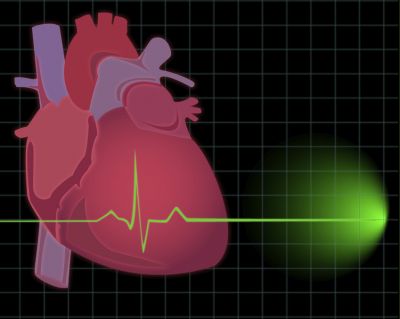
PUMP UP YOUR HEART SMARTS
NATIONAL ACADEMY OF SPORTS MEDICINE
Increase your heart smarts with info on how exercise impacts your heart, how to measure fitness via heart rate, and top cardio concerns fitness pros should know.
HOW IT WORKS
Your heart weighs only about 10 ounces and is roughly the size of an adult fist. This four chamber, centrally located pump pushes five to six quarts of blood, per minute, throughout your body.
Each heartbeat is initiated by a specialized area called the sinoatrial node (SA node) in the heart’s upper right chamber. The SA node is often called the pacemaker (or primary pacemaker) of the heart, triggering electrical impulses that squeeze this part of the heart slightly earlier than the rest of the heart, forcing blood into the lower chambers for each beat.
When you exercise, your muscles require more oxygen and nutrients, at a quicker rate, to fuel contractions. Your heart will beat faster to deliver more blood to meet this demand. In addition, the arterioles (smaller blood vessels leading from the arteries to the capillaries) serving the exercising muscles dilate to accommodate the increased flow. As these vessels open, other arterioles constrict in less active parts of your body, including your digestive system, skin, and the skeletal muscles you’re not using.
Exercise makes your heart stronger. A stronger heart pumps blood more easily throughout this entire process, keeping blood pressure healthy or reducing blood pressure that’s too high. It can also improve circulation, lower heart disease risk, improve blood cholesterol levels, and lower resting heart rate.
TRAINING WITH HEART
Heart rate is a good exercise-intensity gauge. Here are two ways to track heart rate to help improve and monitor fitness.
Resting Rate Have a client record his or her resting pulse at the same time each day for about three days, and use the average to find what is normal. Then, use it to monitor recovery. If their resting heart rate starts to be consistently higher (or lower) than normal, they might be overtraining. Ask about other signs, like fatigue, and watch to see if performance is lagging. If so, it might be time for extra rest and recovery days.
Recovery Rate Heart rate recovery (HRR) notes how much heart rate falls during the first minute after peak exercise—it’s a simple tool for measuring cardio fitness. The recovery rate for the average person is a drop of 15 to 25 beats per minute. Those who recover more quickly have a healthier heart. If a client’s heart rate decreases by just 12 beats (or fewer) in the first minute after exercise, you should have them visit their doctor before continuing to train.
HEART DISEASE SMARTS
When working with a client who has heart disease (and whose doctor has given the OK for exercise), make sure the client:
Fills out a complete pre-participation health screening (such as a PAR-Q) to share health history; if there are concerns, have a doctor sign off before training begins.
Shares a list of medications so you can discuss how to deal with potential side effects
Does an extended, gradual warm-up (and cool-down) of up to 20 minutes
Exercises at a comfortable pace based on rate of perceived exertion (RPE)
Avoids heavy lifting and breathes normally throughout the workout session
Doesn’t over-grip weights or clench fists during exercise
Performs exercises in a standing or seated position
Progresses slowly
Exercises with a buddy when not training with you
BIG HEART, BIG PROBLEMS?
An enlarged heart (or medically termed cardiomegaly,) usually refers to a heart that has been weakened or damaged and responds by enlarging (but without improving pumping ability). Many times this condition is associated with high blood pressure, coronary artery disease, heart valve disease, thyroid disorders, anemia and even pregnancy. But competitive athletes’ hearts, primarily endurance athletes, can become larger than normal—a condition referred to as athlete’s heart. This happens as the body adapts to regular, strenuous training and the walls of the heart become slightly thicker. In athletes, the changes are relatively small—the heart size is usually still considered to be within normal limits. When training is stopped, it reverses and the heart returns to normal size.
SLOW DOWN MY QUIVERING HEART
Another heart concern that we’ve been hearing a lot about is atrial fibrillation, commonly known as AFib. In AFib, the SA node is no longer the primary pacemaker as other impulses are firing causing the artia to beat rapidly and irregularly, becoming ineffective in moving the blood to the ventricles. AFib is also associated with a 5-7 time higher stroke risk since the ineffective pumping can cause blood to pool and clot in the heart and travel to the brain.
CPR AND AED – LIFESAVING SKILLS ALL SHOULD HAVE
Knowing how to perform CPR and how to use an automated external defibrillators (AED) is a skill we all need. Though rare, cardiac events during exercise can occur without warning, for young or old, in the gym or on the field, or anywhere for that matter. That’s why it is required that personal trainers and group fitness instructors earn and maintain certification in CPR and AED.